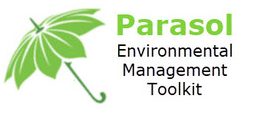Implementing an Environmental Management Toolkit can have significant benefits for organizations, ranging from improved environmental performance to enhanced business success. In this blog post, we will explore the key benefits of utilizing an Environmental Management Toolkit and how it can drive sustainability while also positively impacting the bottom line.
Enhanced Environmental Performance
One of the primary benefits of an Environmental Management Toolkit is its ability to enhance an organization’s environmental performance. This blog post will discuss how the toolkit provides resources, tools, and guidance to identify, monitor, and manage environmental aspects effectively. It will explore how the toolkit facilitates the implementation of sustainable practices, leading to reduced resource consumption, waste generation, and environmental impacts. Improved environmental performance not only demonstrates the organization’s commitment to sustainability but also helps in meeting regulatory requirements and building a positive reputation.
Cost Savings and Efficiency
Implementing sustainable practices through an Environmental Management Toolkit can result in significant cost savings and increased operational efficiency. This blog will highlight how the toolkit enables organizations to identify areas of resource waste and implement measures to reduce energy, water, and raw material consumption. It will discuss how sustainable practices, such as energy-efficient technologies, waste reduction initiatives, and optimized resource management, can lead to reduced operational costs, increased productivity, and improved financial performance.
Compliance with Regulatory Requirements
An Environmental Management Toolkit provides organizations with the necessary resources and guidance to ensure compliance with environmental regulations. This blog post will explore how the toolkit keeps organizations informed about evolving regulatory requirements, permits, reporting obligations, and environmental standards. It will discuss how the toolkit assists in developing and maintaining proper documentation, conducting audits, and fulfilling reporting obligations, mitigating the risk of non-compliance and potential legal penalties.
Competitive Advantage and Stakeholder Engagement
Adopting sustainable practices through an Environmental Management Toolkit can provide organizations with a competitive advantage in the marketplace. This blog will discuss how consumers, investors, and other stakeholders increasingly value environmentally responsible organizations. By implementing the toolkit and showcasing their commitment to sustainability, organizations can attract environmentally conscious consumers, investors, and partners, thereby gaining a competitive edge in their industry. The blog will also emphasize the importance of transparent reporting and engagement with stakeholders to build trust and strengthen relationships.
Reputation and Brand Enhancement
An Environmental Management Toolkit can contribute to enhancing an organization’s reputation and brand value. This blog post will explore how sustainable practices communicated through the toolkit can generate positive public perception, demonstrating the organization’s commitment to environmental stewardship. It will discuss how a strong sustainability reputation can attract customers, boost employee morale, and improve brand loyalty. The blog will highlight the role of the toolkit in helping organizations effectively communicate their sustainability efforts, achievements, and goals to stakeholders, thereby enhancing their overall brand value.
Conclusion
Implementing an Environmental Management Toolkit offers numerous benefits for organizations, ranging from improved environmental performance and cost savings to enhanced competitive advantage and stakeholder engagement. By utilizing the toolkit’s resources, organizations can drive sustainability, comply with regulations, and positively impact their bottom line. Moreover, the toolkit plays a vital role in building a strong reputation, attracting environmentally conscious stakeholders, and enhancing brand value. By harnessing the benefits of an Environmental Management Toolkit, organizations can pave the way for long-term sustainability and business success.



